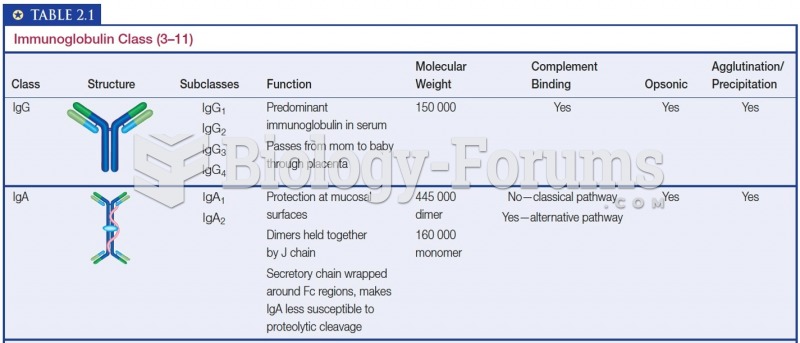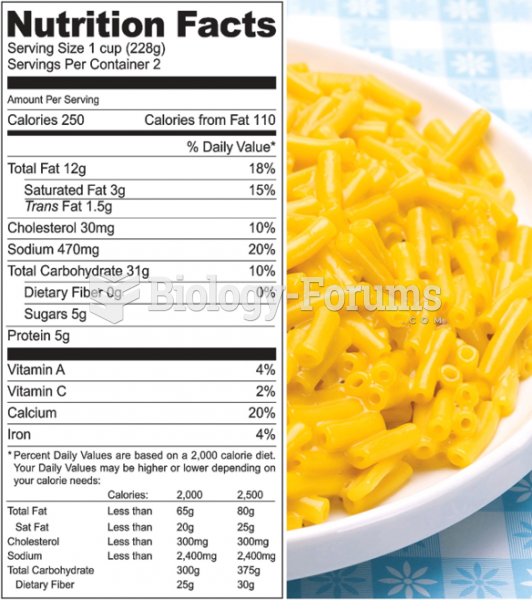Answer to Question 1
As you consider your personal goals, briefly peruse the textbook to determine if new areas of nutrition knowledge are of interest to you.
If you are a nutrition major, then consider becoming a member of the American Dietetic Association, your states Dietetic Association, and participating in your local Dietetic Association events to learn more about current national, statewide, and nutrition-related community events. ADAs House of Delegates is currently discussing 2 hot topics: Health Disparities and Nutritional Genomics & Informatics.
As you explore your future, faculty are more than willing to set aside time and discuss possible areas of interest and direction. Be sure to be professional and set up an appointment for a more thoughtful serious discussion of your career concerns.
Answer to Question 2
Patient was previously diagnosed with diabetes, and by his own admission has not been taking his medications. This led to a state of hyperglycemia.
Patient reports vomiting persistently, which probably led to severe dehydration. In fact, patient has many signs that are consistent with dehydration:
- Poor skin turgor
- Tachycardia
Low blood pressure (90/70 mmHg)
- High BUN
- Urinalysis reveals high specific gravity (1.045, dehydration)
- High hematocrit ( RBC increases when blood volume is concentrated)
- High osmolality
HHS (hyperosmolar hyperglycemic state) results from severe dehydrationas may occur with type 2 diabetes in conjunction with a co-existing illness. In this case, Mitch was vomiting, which led to dehydration and a decrease in fluid intake; this, along with diabetes, allowed Mitch's blood glucose levels to reach very high levels (1524 mg/dL), indicating HHS.
With type 2 diabetes, the transport of glucose into the cell is hindered because of insulin resistance. There is a decrease in circulating insulin when there is an acute illness such as vomiting. There is a simultaneous increase in counter-regulatory hormones that stimulate gluconeogenesis, causing more glucose production. This allows blood glucose to rise to very high levels. High blood glucose levels and little circulating insulin further contribute to insulin resistance, keeping glucose levels high. Osmotic diuresis occurs as the hyperosmolality of the blood draws water from the cells. Glucose of >180 mg/dL is over the renal threshold (leading to glucosuria). This also explains the low sodium levels, as sodium is excreted via urine along with excess water and glucose.
HHS is often indistinguishable from the illness that is co-existing with diabetes. In this case, the persistent vomiting from being ill allowed blood glucose levels to spike uncontrollably.
HHS symptoms:
- Osmolality is high (322.6 mmol/kg/H2O)
- Glucose levels are severely high (1524 mg/dL)
- Severe dehydration (specific gravity of 1.045, which is significantly high)
- Non-ketosis, which differentiates HHS from DKA. Although Mitch has some ketones present in the urine, it is not a significant amount. In addition, DKA is more common in type 1 diabetics.
HHS is defined as:
- Plasma blood glucose levels >600 mg/dL, whereas severe DKA is >250 mg/dL (pt. blood glucose is 1524 mg/dL, or >600 mg/dL)
- Quantity of ketones in urine is small consistent with pt. diagnosis
- Arterial pH >7.30 N/A
- Serum osmolality is greater than 320 mmol/kg (pt. osmolality is 322.6 mmol/kg upon diagnosis)
- Altered mental capability (stupor/coma) consistent with pt. diagnosis
 Mead analyzed taking the role of the other as an essential part of learning to be a full-fledged ...
Mead analyzed taking the role of the other as an essential part of learning to be a full-fledged ...
 Stressing that education reproduces a country’s social class system, conflict theorists point out ...
Stressing that education reproduces a country’s social class system, conflict theorists point out ...





